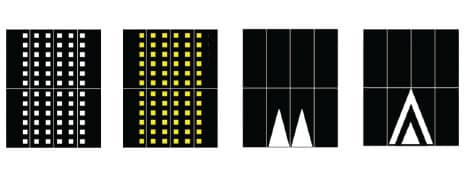Speed Humps
Features:
• Interlocking, puzzle piece design
• Highly visible with bright highway tape
• Environmentally friendly
• Quick and simple to install
• Customizable sizing & taping
Speed Reduction
Traffic safety is a top priority in areas where vehicles and people are in close proximity. Speeding or aggressive driving can have deadly consequences in places such as playgrounds, parks, schools, and parking lots. Speed reduction is one of the primary ways of protecting pedestrians in these locations. Slower speeds help to eliminate potential accidents and fatalities. When it comes to slowing cars down, many confuse speed bumps and speed humps. Here, find the main differences.
Speed Humps
Speed humps are also known as road humps or undulations. They are typically used in areas where the speed limit is 10-15 mph, such as local streets or connector roads where smooth flowing traffic is ideal but speeding would endanger pedestrians. Speed humps are commonly used in school zones or near parks and playgrounds.
Speed humps usually span the entire lane that they are placed in so that a vehicle is forced to drive over them. A speed hump is mildly felt when a vehicle passes over it at the correct speed. If a vehicle is driving too fast, it can significantly jar the vehicle, creating a noticeably uncomfortable situation.
Speed humps are designed in many lengths and profiles. The size used will depend on the location, and the different designs will determine how much discomfort is experienced in the vehicle. They are usually placed in series to maintain speed control throughout a long corridor, and the travel length itself typically ranges from 3-20 feet.
Speed Bumps
Speed bumps are designed to be more aggressive and are used to reduce traffic to speeds between 2-10 mph. They are usually located in areas where vehicles and pedestrians are in closer proximity, such as parking lots or driveways. It is highly unusual to see a speed bump on a public road because they would seriously disrupt the flow of traffic. They can also damage vehicles that are traveling at otherwise normal road speeds.
Speed bumps are usually two to four inches in height, but they have a much shorter travel length than speed humps. Like speed humps, they are typically placed in series, at intervals, to maintain speed reduction. Speed bumps often create an intense bounce in the vehicle. Because of their smaller size, a vehicle driving over the speed limit would experience uncomfortable jolts.


